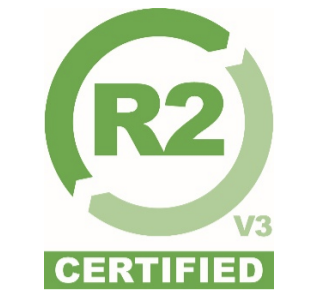Make Your Business Merry and Bright: 5 Key Year-End Tech Cleanup Tips
As soon as leftover turkey has been placed in the refrigerator and holiday sales begin, companies gear up for the final sprint of the holiday season and the dawn of the new year.
This period of transition presents and excellent opportunity for your company to set goals for the year ahead. Securely and responsibly disposing of your outdated or unwanted electronics is one of the most impactful resolutions you can make. In doing so, you’ll be setting your business up for a prosperous and environmentally proactive 2024. Read on to discover 5 key tips for tech cleanup that you can put into action today.

- Making a List: Conduct a Comprehensive Electronics Inventory
It’s common for businesses to accumulate a variety of electronics over time, some of which might now be obsolete or in disrepair. As such, the first step in your tech cleanup process is to inventory all the devices within your organization. This includes working computers, laptops, cell phones, printers, servers and any other tech, as well as decommissioned equipment. Items that have fallen into disuse are just as susceptible to data breaches as active devices. A detailed inventory will give you a clear picture of all your electronics in one easy to access place.
- Check it Twice: Evaluate and Categorize Electronics for Disposal
After compiling your inventory, assess the condition of each item to determine whether it is time to dispose of it. Generally, your electronics will fall into one of two categories:
- Still in Use: These are devices that are currently operational and required for ongoing business activities.
- Ready for Recycling or Disposal: This category includes all obsolete, broken or unused items.
When determining each item’s status, consider when you last used the equipment, if it will be needed again in the future and if other equipment has already replaced it. For example, first-generation obsolete tablets with specs that are dwarfed by today’s latest devices is a good place to start. Creating a schedule to regularly update and maintain your electronic assets list can help keep you ahead of this process in the future.
- Start the Year with a Clean Slate: Secure Data Destruction
Data security is a critical aspect of technology recycling. In order to prevent identity theft, leaked trade secrets and other costly outcomes of data breaches, you must ensure that the digital information on each device that you are recycling has been thoroughly destroyed. Simply deleting files is not enough, as they can often be restored by malicious actors.
At PC Survivors, we follow the specifications outlined by in the National Industrial Security Program Operating Manual when shredding hard-drives, optical media and other digital storage devices so that their contents are permanently irretrievable. Upon request, we can provide you with a detailed certificate of destruction for your records.
- Joy to The World: Team Up with Responsible Recyclers
Many electronics contain hazardous materials such as lead, mercury, and cadmium. When devices are thrown away in standard dumpsters and trash bins, they often end up in landfills where their harmful chemicals can leach into ground water and cause significant harm to the environment and human health. That is why it is so important to choose a responsible recycling partner.
When picking a company to work with, look for certifications like RIOS and R2v3. These designations reflect the highest environmental and safety standards – and are renewed annually through meticulous third-party audits. It is also worth inquiring about their process, such as how various components are handled, and which specific destruction techniques are employed. A good partner will be transparent about their methods and happy to share their certifications and processes with you. At PC Survivors, we are proud to hold both certifications mentioned above and are happy to explain every aspect of our detailed recycling and data destruction process.
- Sleighing E-Waste for Years to Come: Implement a Sustainable E-Waste Policy
Establishing or refining a sustainable e-waste policy is key to long-term success. This should cover how to responsibly manage every form of e-waste that your business encounters – from ink cartridges to full-scale servers and everything in between. You can put your plan into action with workshops for employees that stress the importance of recycling and data destruction, as well as outlining specific company procedures. Additionally, regular policy audits and updates keep practices aligned with technological and regulatory developments. With these measures in place, you can keep your business merry and bright for years to come.







